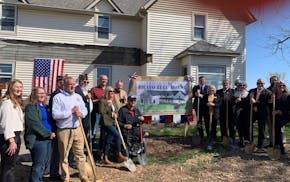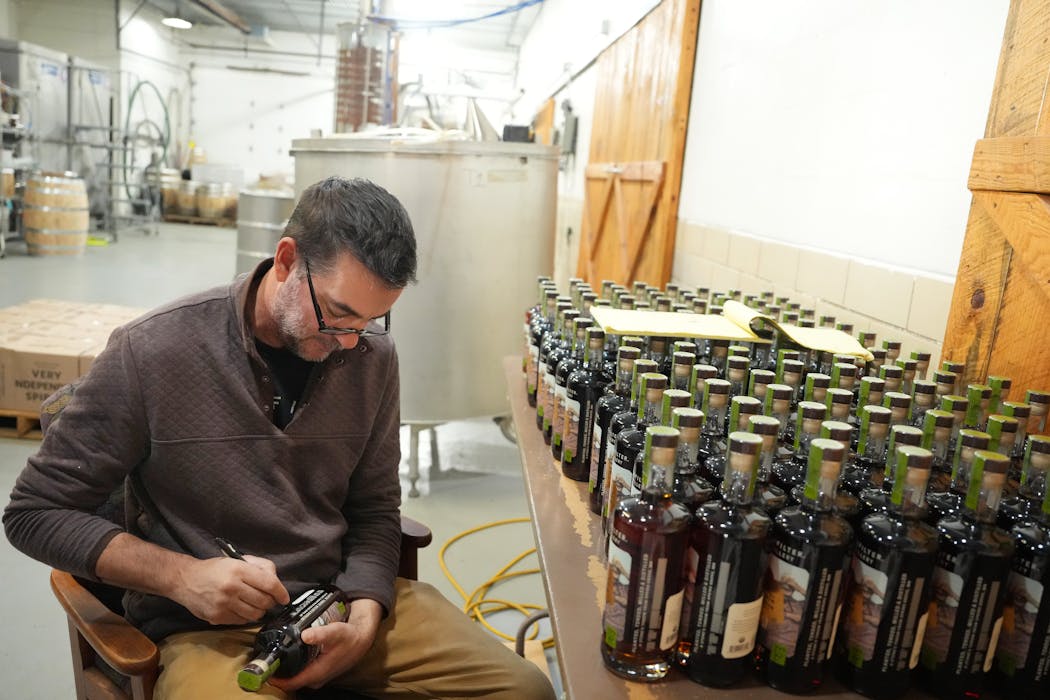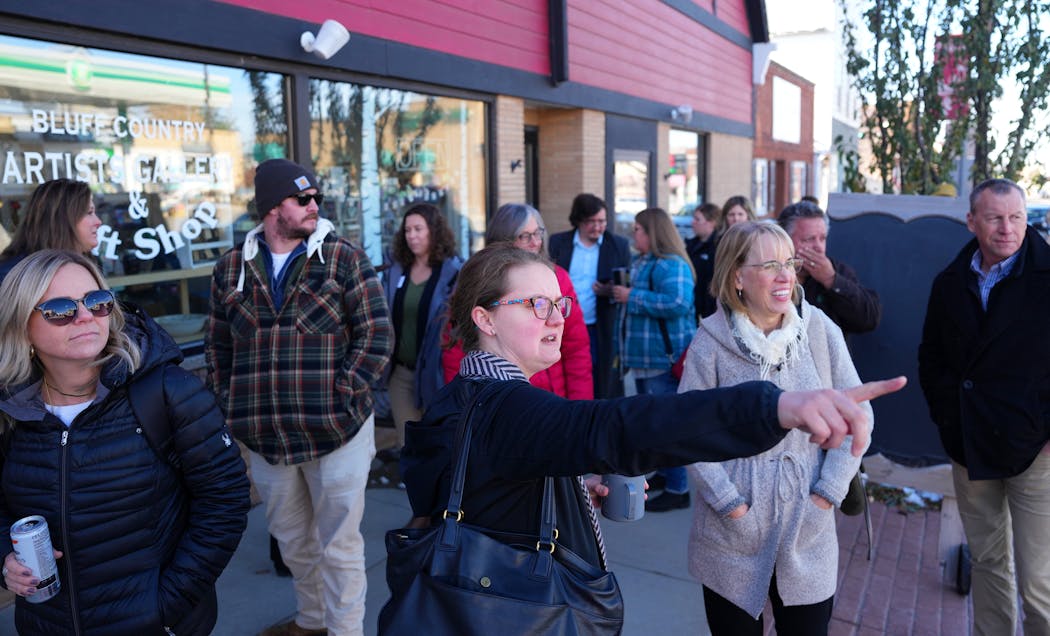SPRING GROVE, Minn. - Jenn Gulbranson took a chance on this city, population 1,300, when she and her husband decided to buy the building they live and work in.
The Spring Grove native, 38, sold their house near town during the pandemic and moved above the salon she runs downtown, just a stone's throw from the remains of a burned out hardware store. They wanted to stay, Gulbranson said, because of how much they love the area.
"We have really good solid roots," Gulbranson said. "It's kind of fun when you have people from other towns wanting to move to Spring Grove, not just Spring Grove people who graduated and then come back."
Tucked in the corner of southeast Minnesota, Spring Grove is like many small towns throughout the state — vacant buildings on Main Street, lower-than-average household income, a slightly declining population according to U.S. Census Bureau counts.
The city has had its share of setbacks, from a devastating December 2022 fire that razed its only hardware store and gutted nearby buildings to recently announced layoffs at Northern Engravings, a car parts maker and major employer.
But Spring Grove plans to turn that around. In recent years city officials have partnered with area schools, businesses and volunteers on a blueprint to grow the community with more housing, more public space and more amenities to draw in Bluff Country tourists.
That blueprint is paying off as regional economic development specialists say Spring Grove is poised to expand while offering lessons to other rural communities.
Building a network
"What we've been trying to do is build the culture and the kind of wherewithal to be able to start some of these local investments ourselves," said Courtney Bergey Swanson, one of two specialists working with Spring Grove.
Bergey Swanson is with CEDA (Community and Economic Development Associates), a nonprofit that provides economic development expertise to small towns in southeast Minnesota.
Spring Grove contracts with CEDA to work on business issues every week. That level of economic development work is rare in small towns, but it does pay off.
"Every community needs to understand what their resources are and, as importantly, build the people power to make things happen," said Pam Bishop, vice president of entrepreneurship at the Southern Minnesota Initiative Foundation.
CEDA helped Spring Grove start its first Chamber of Commerce a few years ago, as well as a community real estate fund using private money from area residents. And they've been key to Spring Grove 2030, an ongoing community planning initiative.
Bishop said Spring Grove is noteworthy for being proactive despite its distance from major metro areas, unlike most small towns experiencing growth. Spring Grove is about 75 minutes from Rochester and 40 minutes from La Crosse.
Ripple effects
Local telecom company Spring Grove Communications got ahead of most of Minnesota in the early 2000s when it installed broadband throughout the area. It remains one of the community's largest employers and philanthropic organizations.
High-speed internet helped businesses like Top Dog Custom Apparel & Printmaking survive the pandemic as owner Robin Bartell expanded her online services.
"It was good for us to have to explore some different avenues, which have turned out great," Bartell said. "But I think it's also just the way people shop has really changed, and the way they interact with one another as humans has changed."
Another local business has become a tourist draw in recent years, spurring more interest in adding amenities.
Farmer Christian Myrah founded Rockfilter Distillery in 2017 inside a former creamery after he wanted to make bourbon using some of his excess corn. The distillery has garnered recognition among bourbon makers. Its front room fills up with tourists on weekends, and Myrah recently bought a warehouse downtown to store up to 3,000 barrels of alcohol.
"I talk to everyone and they're like, 'Well, we're from southern Iowa or we're from Omaha and we really wanted to come and try your product,'" Myrah said. "A lot of people in town probably don't realize what's coming to Spring Grove and how much traffic we're bringing here."
The city offered start-up money in a restaurant challenge to attract new places to eat. The challenge paid off — a new Mexican restaurant opened over the weekend after its owner moved his family from Sparta, Wis. Another restaurant, Fat Pat's, will reopen next year after it outgrew space in Spring Grove's local grocery store.
Fire and layoffs
The December fire that destroyed the hardware store also displaced 14 residents living above the store in six apartment units. Almost all of those residents have left the community, while the store owner sold the property to the city and took a job elsewhere in town.
Spring Grove got $250,000 from the Minnesota Legislature to clean it up. City leaders secured another $313,000 from the state for redevelopment costs.
They plan to demolish the two nearby buildings and construct a three-story structure featuring 7,500 square feet of commercial space on the ground floor and 14 apartments above. The project will cost about $5 million in loans, the two grants and real estate fund money.
The hardware store's closure has forced most people to drive to Caledonia or Harmony to pick up supplies.
Mayor Saundra Solum said the bigger problem is what will happen to the 80 people losing their jobs at Northern Engraving by the end of the year.
Local and state officials have organized job fairs and services for workers, but "we don't know yet how that will affect us," Solum said.
Keep moving
Bergey Swanson admits none of Spring Grove's ideas for success are groundbreaking — small towns have tapped community real estate funds for decades to expand, while the city's promotional tactics were taken from larger communities.
But they're working for Spring Grove in part because so much groundwork has been done over the past few years: the small steps taken in surveys, community funds and studies pave the way for future initiatives.
For Gulbranson, the community push only solidifies her decision to stay in her hometown and watch it grow.
"We have a solid group of people that are ready to see some change, that are willing to make changes and willing to throw out some of the old nostalgic ways of doing things to grow a different type of culture in town," she said.

Hennepin County Attorney inks contract with D.C. law firm to prosecute trooper Londregan case

Defense attorneys in Feeding Our Future trial cast doubt on FBI's meal fraud investigation

Protesters hold dueling Gaza rallies at University of Minnesota

Overdose deaths spike after incarceration, but Minnesota jails lack treatment








